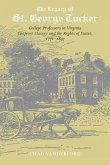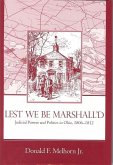On November 4, 1791, a force of Native Americans attacked an American military encampment in the Northwest Territory, near what is now the border between Ohio and Indiana. The battle was catastrophic for the Americans: out of a force of about a thousand men, two dozen made it out unscathed, making it the worst defeat in American military history¿more deadly, more brutal, and more consequential than the Little Bighorn. In this book, Rick Schoenfield reconstructs this close-quarter but far-reaching clash of arms near the headwaters of the Wabash River, presenting newly uncovered details and offering new interpretations of one of the most important but least understood battles in American history. In the 1783 Treaty of Paris, Britain ceded most of the land east of the Mississippi and south of the Great Lakes to the fledgling United States, but the Northwest Territory became ground hotly contested by the new nation and the native tribes who had long inhabited the region. In 1790, President Washington sent a failed expedition to secure the area, and a year later, he sent another expedition, which ended up uniting the Indian tribes instead of defeating them. In November 1791, yet another attempt to defeat the native tribes was sent out, this time under Arthur St. Clair, a Scottish-born former president of the Continental Congress. St. Clair encountered logistical and morale problems all along the way, and his force was no match for the Indians who attacked him on the morning of November 4. The Americans were outmatched at every turn, in the center, on the left, on the right¿and their desperate bayonet charges failed to turn the tide. After a bitter retreat, two dozen of the thousand-strong American force remained. It was the worst defeat in American military history: 97 percent casualties among soldiers, 88 percent among officers. Afterward, Washington refused a court-martial of St. Clair, who hoped to clear himself at trial, and instead forced the general¿s resignation. The House of Representatives launched an investigation¿the first of its kind in U.S. history. The committee requested documents from Washington, who summoned his department heads in one of the country¿s first Cabinet meetings¿and ultimately refused to provide the material, in the first use of executive privilege. The committee largely exonerated St. Clair, but the full House never took up the committee¿s report. The battle left an opening that neither the Indians nor the British could exploit, and within a few years the Americans secured the Northwest Territory.








